Lesson 13The Volume of a Cylinder
Let’s explore cylinders and their volumes.
Learning Targets:
- I can find the volume of a cylinder in mathematical and real-world situations.
- I know the formula for volume of a cylinder.
13.1 A Circle's Dimensions

Here is a circle. Points , , , and are drawn, as well as Segments and .
- What is the area of the circle, in square units? Select all that apply.
- approximately 25
- approximately 50
- If the area of a circle is square units, what is its radius? Explain your reasoning.
13.2 Circular Volumes
What is the volume of each figure, in cubic units? Even if you aren’t sure, make a reasonable guess.

- Figure A: A rectangular prism whose base has an area of 16 square units and whose height is 3 units.
- Figure B: A cylinder whose base has an area of 16 square units and whose height is 1 unit.
- Figure C: A cylinder whose base has an area of 16 square units and whose height is 3 units.
Are you ready for more?
| prism | prism | prism | cylinder |
| base: square | base: hexagon | base: octagon | base: circle |

Here are solids that are related by a common measurement. In each of these solids, the distance from the center of the base to the furthest edge of the base is 1 unit, and the height of the solid is 5 units. Use 3.14 as an approximation for to solve these problems.
- Find the area of the square base and the circular base.
- Use these areas to compute the volumes of the rectangular prism and the cylinder. How do they compare?
- Without doing any calculations, list the figures from smallest to largest by volume. Use the images and your knowledge of polygons to explain your reasoning.
- The area of the hexagon is approximately 2.6 square units, and the area of the octagon is approximately 2.83 square units. Use these areas to compute the volumes of the prisms with the hexagon and octagon bases. How does this match your explanation to the previous question?
13.3 A Cylinder's Dimensions
-
For cylinders A–D, sketch a radius and the height. Label the radius with an and the height with an .

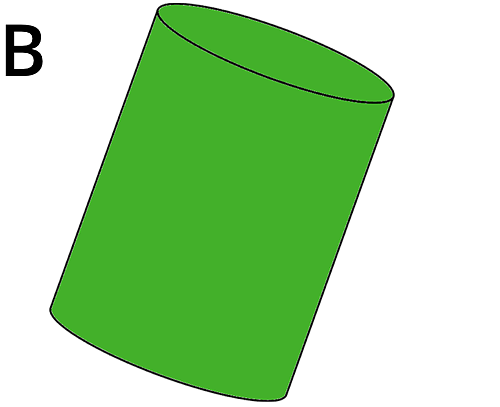
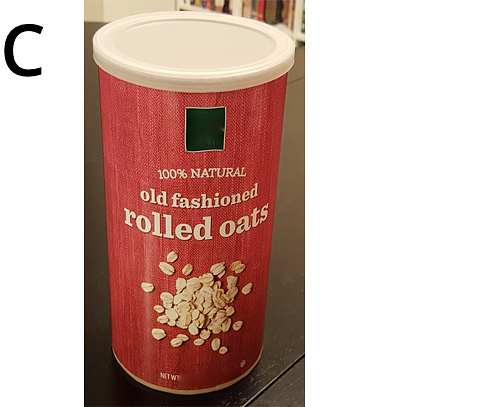
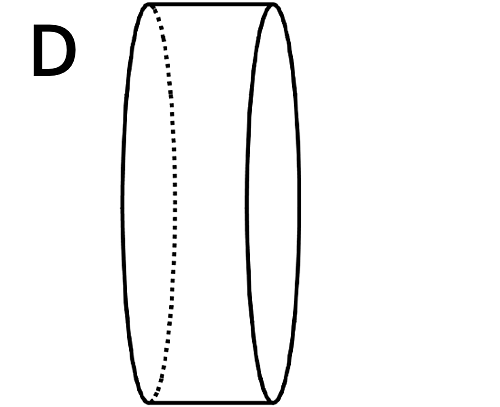
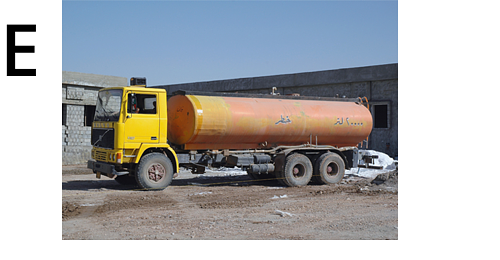
“Volvo water tank truck in Iraq” by Jum Gordon via Wikimedia Commons. Public Domain. 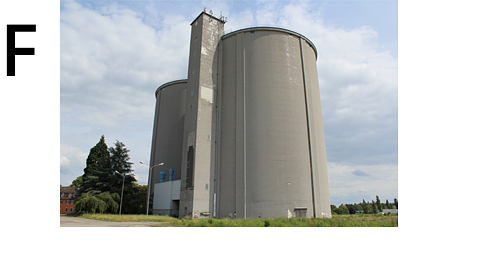
“Silo” by N3rdling via Pixabay. Public Domain. - Earlier you learned how to sketch a cylinder. Sketch cylinders for E and F and label each one’s radius and height.
13.4 A Cylinder's Volume
-
Here is a cylinder with height 4 units and diameter 10 units.

- Shade the cylinder’s base.
- What is the area of the cylinder’s base? Express your answer in terms of .
- What is the volume of this cylinder? Express your answer in terms of .
- A silo is a cylindrical container that is used on farms to hold large amounts of goods, such as grain. On a particular farm, a silo has a height of 18 feet and diameter of 6 feet. Make a sketch of this silo and label its height and radius. How many cubic feet of grain can this silo hold? Use 3.14 as an approximation for .
Are you ready for more?
One way to construct a cylinder is to take a rectangle (for example, a piece of paper), curl two opposite edges together, and glue them in place.
Which would give the cylinder with the greater volume: Gluing the two dashed edges together, or gluing the two solid edges together?
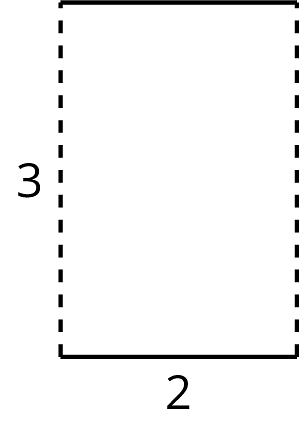
Lesson 13 Summary
We can find the volume of a cylinder with radius and height using two ideas we've seen before:
- The volume of a rectangular prism is a result of multiplying the area of its base by its height.
- The base of the cylinder is a circle with radius , so the base area is .
Remember that is the number we get when we divide the circumference of any circle by its diameter. The value of is approximately 3.14.
Just like a rectangular prism, the volume of a cylinder is the area of the base times the height. For example, take a cylinder whose radius is 2 cm and whose height is 5 cm.

The base has an area of cm2 (since ), so the volume is cm3 (since ). Using 3.14 as an approximation for , we can say that the volume of the cylinder is approximately 62.8 cm3.
In general, the base of a cylinder with radius units has area square units. If the height is units, then the volume in cubic units is
Lesson 13 Practice Problems
Match each set of information about a circle with the area of that circle.
- Circle A has a radius of 4 units.
- Circle B has a radius of 10 units.
- Circle C has a diameter of 16 units.
- Circle D has a circumference of units.
- square units
- approximately 314 square units
- square units
- square units
- Sketch a cylinder.
- Label its radius 3 and its height 10.
- Shade in one of its bases.
At a farm, animals are fed bales of hay and buckets of grain. Each bale of hay is in the shape a rectangular prism. The base has side lengths 2 feet and 3 feet, and the height is 5 feet. Each bucket of grain is a cylinder with a diameter of 3 feet. The height of the bucket is 5 feet, the same as the height of the bale.
-
Which is larger in area, the rectangular base of the bale or the circular base of the bucket? Explain how you know.
-
Which is larger in volume, the bale or the bucket? Explain how you know.
-
Three cylinders have a height of 8 cm. Cylinder 1 has a radius of 1 cm. Cylinder 2 has a radius of 2 cm. Cylinder 3 has a radius of 3 cm. Find the volume of each cylinder.
A one-quart container of tomato soup is shaped like a rectangular prism. A soup bowl shaped like a hemisphere can hold 8 oz of liquid. How many bowls will the soup container fill? Recall that 1 quart is equivalent to 32 fluid ounces (oz).
Two students join a puzzle solving club and get faster at finishing the puzzles as they get more practice. Student A improves their times faster than Student B.
- Match the students to the Lines and .
- Which student was faster at puzzle solving before practice?